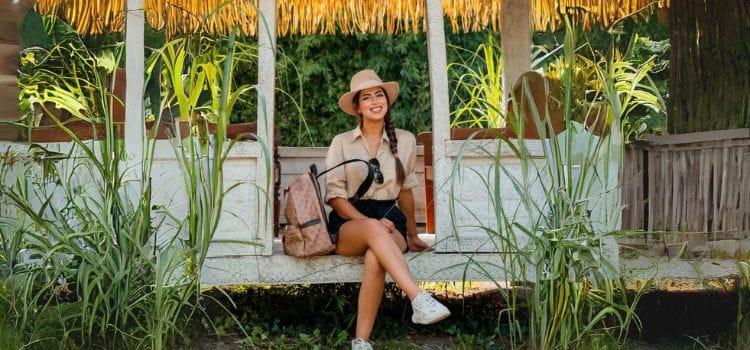Can You Wear Swimsuit in Onsen? What You Need to Know
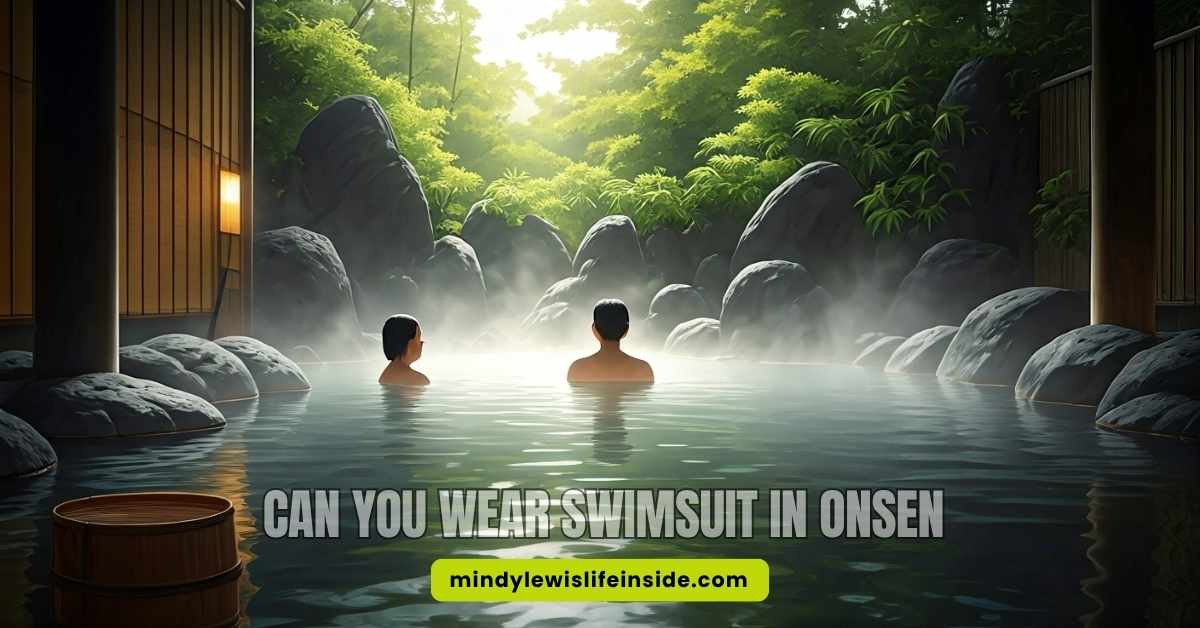
As an Amazon Associate, I earn from qualifying purchases
Interested in onsen etiquette in Japan? If you are planning to go to an onsen for the first time, it helps to know what to do in the bathing area. This will help you have a good time. Onsens are special in Japan.
The rules there sometimes seem different, especially when it comes to what you wear. Things like swimwear and clothes are not allowed, and it’s important to know why.
It helps you relax and enjoy the soak without any worry. This guide covers the main rules, gives useful tips, and offers choices for modesty. Are you ready to try it out?
Key Highlights
- Onsen etiquette in Japan requires visitors to bathe naked—swimwear and clothing are not permitted in the bathing area of traditional public baths.
- Mixed-gender onsens and family-friendly facilities may allow swimwear, but these are rare exceptions to the rule.
- Most Japanese hot springs have separate lockers and changing rooms for men and women, ensuring privacy and modesty before entering the bath area.
- Private baths are a good news option for those who feel uncomfortable with communal nudity, and small towels offer added discretion.
- Hygiene, modesty, and respect for cultural traditions are central to the onsen experience, making understanding the dress code essential for first-time visitors.
- Seeking out onsen facilities with flexible policies or private baths can help you enjoy the hot springs while respecting local etiquette.
Understanding Japanese Onsen Culture
Japanese public baths and hot springs, called onsens in Japan, are not just for resting or letting go of stress. These places have old traditions and rules too. At onsen facilities, you will find certain ways things are done. These help keep the bathing area clean and friendly for all people there.
The customs for onsen etiquette help everyone enjoy the public baths and hot springs. They bring a feeling of peace and respect in the bathing area. Before you go into an onsen, it is good to know how to dress and how to act. This will help you avoid feeling out of place. Here is what you need to know about onsen etiquette.
Can you wear swimwear in a Japanese onsen?
The answer is almost always no. There are strict rules in onsen facilities based on long-held traditions. While you might wear swimwear at pools or other spas for modesty, onsens follow a different way. They ask you to be naked to keep things clean and respect the culture.
The way you act, or the etiquette, is a big part of the onsen experience. Being naked is not a choice; it is what everyone does in an authentic onsen. If you want to try the real thing in Japan, you have to leave your swimwear in the locker.
Why Etiquette Matters in Japanese Bathing Rituals
Stepping into a Japanese public bath, called an onsen, is about more than just relaxing in hot springs. Onsen etiquette is a set of habits to keep the bathing area clean and everyone comfortable. People use a small towel or a washcloth. This helps cover up a bit and helps keep your body clean before you go to the water.
When you enter, you leave all your clothes and swimwear in the locker. You only bring a little towel for modesty. Swimwear is not allowed at all. That is because swimwear can carry soap or dirt into the hot springs. It would not keep the water pure.
Brian McDonough from Interac says, “Etiquette is the foundation of communal harmony in Japanese baths.”
He means that when you follow onsen etiquette, like speaking in quiet voices, washing your body first, and using your towel the right way, you show respect for other people. Doing this helps everyone enjoy the experience and keeps the old practice alive.
Traditional Dress Code: What Are You Supposed to Wear?
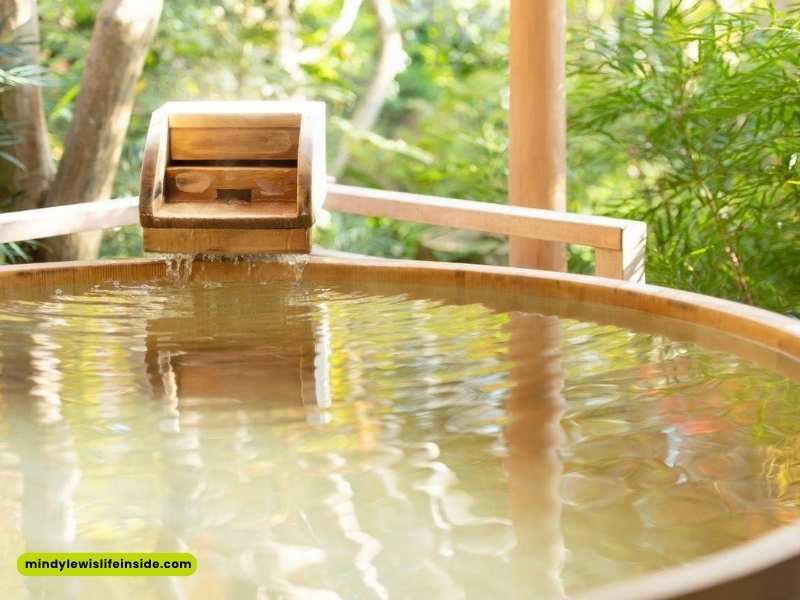
When you get to an onsen, the usual rule is easy to follow. You have to take off all your clothes and put your belongings in a locker. It might feel strange at first, but the good news is that everyone does this, so you are not alone.
People act with respect, so modesty stays. You can use a small towel to cover up as you walk to the bathing area. Larger towels and all other clothing should stay in the locker.
If this is your first time visiting an onsen, you might feel a bit unsure when you arrive. Once you see how things work, it starts to feel normal. There is a reason why swimwear and extra clothing are not allowed. Onsen etiquette helps make the bathing area calm and welcoming for all. This way, most people can feel good about joining in respectfully.
The Rule of Nudity: Why Clothing Is Not Allowed
Nudity in Japanese onsens is more than just a long-held custom—it’s a strict rule. It helps the onsen stay clean, and it is meant to protect people’s modesty. When you walk into the changing room, you will find a locker there.
You put your clothes and belongings inside the locker. You cannot bring any clothing, swimwear, or undergarments into the bathing area or hot springs. At first, this may feel a bit awkward. But soon, you will notice that everyone does the same thing. People don’t mind it much, and these shared rules help keep everyone comfortable.
So why can’t you wear swimwear or other clothing at most Japanese onsens? You need to keep in mind that these items can carry small bits of dirt or soap on them. This can get in the hot springs and make the bathing area less clean. Even something like a bathing suit is not allowed, because it goes against onsen etiquette. These rules are about keeping the water nice and clean for all.
If you worry about modesty, it is easy to cover up with a small towel when you walk from the locker to the pool. People feel this is perfectly fine. As Ayaka from Adventure Hokkaido says about visiting an onsen for the first time: “Relax and embrace the tradition—soon enough, you’ll hardly notice.”
Historical and Cultural Reasons Behind Onsen Attire
Why do Japanese onsens ask people to be naked? The answer is in the long history and culture of Japan. Hot springs are special places in Japan that stand for purity and strong ties between people. In old times, wearing clothes in the bathing area was not allowed.
People believed that clothes were a block to getting clean in both mind and body, and also to connecting with others. Traditional etiquette in these public baths says that no one should be above or below anyone else. Without clothes, there are no signs showing who is more important, so everyone is the same and the sense of being together is stronger.
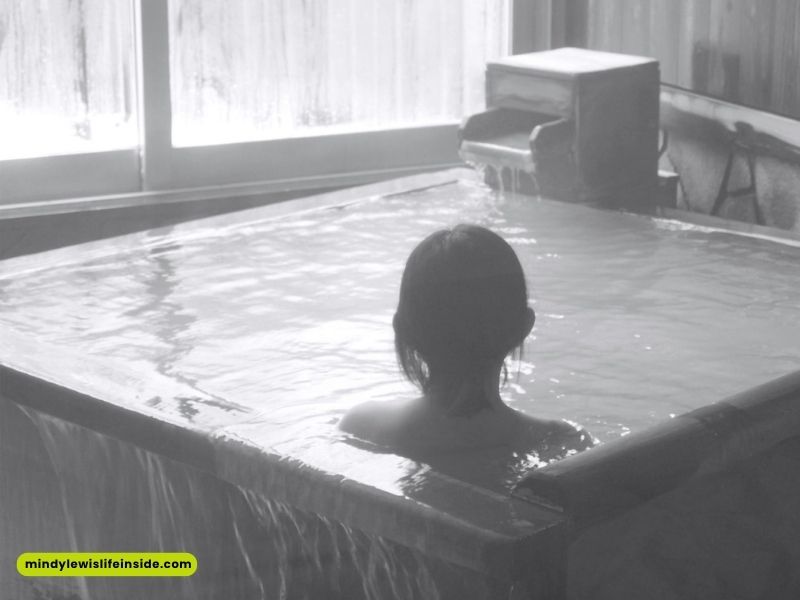
Public baths have always been about people sharing a space and an experience. Taking off clothes means every person is equal in the bathing area. There are also practical reasons for this etiquette. Swimwear and clothes might bring dirt or even soap into the hot springs, but being nude helps everyone keep things extra clean.
Now that more visitors from other countries come to Japan, some onsen facilities let people use modesty towels or thin cover-ups for women. Still, in most onsen, the main rule has not changed.
The onsen is a place to forget the outside world because tradition and cleanliness always come first.
Brian McDonough says, “The onsen is where the outside world is left behind—cleanliness and tradition come first.” Next, we’ll talk about the few times when swimsuits are OK in public baths.
Exceptions to the Rule: Swimwear-Friendly Onsens
While most onsens ask people to be nude, there is good news for those who want something different. The hot springs that let you wear swimwear are out there, but there are only a few. These onsen facilities are often made for families or mixed-gender bath areas.
The places are made so that everyone can feel at ease and welcome. People can use these Japanese hot springs without worrying about the old rules to be nude.
Mixed-gender (konyoku) baths and family onsens are the ones where you can most likely wear swimwear, though there aren’t that many. If modesty is something you care about, you should look for these more flexible hot springs. This is how they work.
Mixed-Gender (Konyoku) and Family Onsens with Flexible Policies
In some mixed-gender (konyoku) and family onsens, the rules can be easier to follow. This makes the hot springs experience good for everyone. These places often let you wear simple swimwear, so it is less hard for people who are new to onsen etiquette.
If you go, make sure you bring a little towel. You can use it to cover up when you walk to and from the bathing area. For families, these simple policies help to make the place feel open and warm. They also help you, your friends, and your family relax and make new memories together.
How to Find Onsens That Permit Swimsuits
Looking for swimwear-friendly hot springs in Japan? It’s easier than you might think, but research is crucial. Many onsen facilities list their dress codes online. Resorts with mixed-gender or family-friendly pools often highlight their flexible attire policies.
Some popular destinations, like Hakone’s Yunessun, offer themed baths where swimwear is not just allowed but required. Always check reviews, official websites, or call ahead to confirm. Here’s a table to help you start your search:
| Onsen Facility | Swimwear Allowed? | Bath Type | How to Check Policy |
|---|---|---|---|
| Yunessun (Hakone) | Yes | Mixed-gender | Website, brochures, front desk |
| Private baths at Ryokan hotels | N/A (Private use) | Private/family | Reservation confirmation |
| Konyoku-onsen (various regions) | Sometimes | Mixed-gender | Call ahead, local guides |
| Family Onsen (Beppu, Kinosaki) | Often | Family/mixed | Brochure, tourist info centers |
Remember, “How can I find onsens that specifically allow bathing suits or towels?” is a common question for travelers, and this table gives you a solid starting point.
Alternatives for the Modest or Uncomfortable Visitor
You do not have to miss the onsen experience if you are not comfortable with nudity. The good news is, many onsen facilities in Japan offer private baths and options you can reserve. These hot springs are great for people who want more privacy. Families, couples, and people who want more modesty can enjoy these choices.
You can pick a private bath or you can use towels to cover up if you want that. Onsen facilities in Japan always try to help visitors relax and feel good. There are many solutions for people who want more modesty at an onsen.
Private Baths and Reserved Onsens
Private baths are a good way to enjoy hot springs on your own if you like peace. You may find many ryokan or onsen hotels that have rooms with private baths. Some places let you reserve a private onsen just for your family or group. These onsen facilities are good if you care a lot about modesty or want quiet time without others nearby.
If you feel uncomfortable being naked in an onsen, you should try private baths. With these, you can wear swimwear, keep towels with you, or bathe any way that makes you feel at ease. This takes away all stress from common etiquette and nudity rules there.
Many families and couples go for reserved onsens for more personal and simple use. With these private baths, everyone gets a good, relaxing hot spring soak together. Remember to make your booking ahead of time, especially in busy periods.
These onsen facilities help you keep tradition but also give some freedom, making the experience feel just as real, fresh, and worth it.
Using Towels for Discretion – What’s Permitted?
While swimwear is not allowed in the public baths, you can use a little towel or washcloth to feel more modest as you walk through the bathing area. This small towel is part of onsen etiquette. It helps you cover yourself when you are walking or standing near the bath area.
- You may bring a small towel for modesty as you move between the locker and the bath area. But do not put it in the water. You should fold it and place it on your head or beside the pool.
- Large towels and your other clothing must stay in the changing room. You can only bring a washcloth or a small towel with you.
- Some onsen facilities offer thin gauze cover-ups to rent. These are for modesty and are often for women.
If you want to know how to find onsen places that let you wear bathing suits or towels, you should check the facility’s policies, brochures, or use online resources. The most important thing is to follow onsen etiquette and only use towels in the way that is allowed by the bath area.
What to Expect as a Foreigner Visiting Japanese Onsens
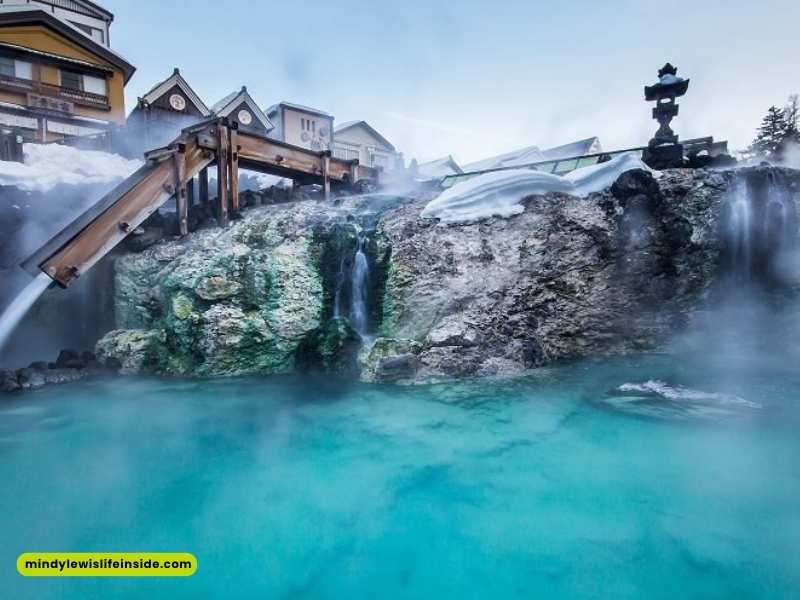
If you are going to visit a Japanese onsen as someone from another country, you can expect people to be friendly. But you should know that there are some strict rules about nudity and how to behave.
Many people who go to the onsen for the first time worry about what to wear. But after a while, the rules feel easy and normal. Men and women have separate locker rooms. You get a small towel that can help with modesty.
When you have the onsen experience, you’ll see that most people there care about relaxing, not about how they or other people look. If you know the basic etiquette and follow it, you will fit in. This helps you enjoy the onsen and the nice, calm feeling it gives. Let’s look at what you need to do when you go there.
Navigating the Changing Rooms and Bathing Process
When you arrive, you should go to the locker area. You can tell where to go by the red curtains for women and the blue for men. Put your belongings in a locker. Take off your clothes and leave everything inside except for a small towel. These steps show respect and modesty in the bathing area.
Pick up your washcloth and walk into the bathing area. Before getting into the hot springs, wash and rinse your body well at the showers. Tie up your long hair if you have it, and make sure all the soap is gone. Good onsen etiquette means being clean before you get in. Go into the hot springs slowly so you do not bother others. Take your small towel for modesty, but keep it dry—it is often placed on your head.
After you finish, hairdryers and cotton buds are in the locker room. You can use these and other things to tidy up. Knowing how this works helps you relax and enjoy your time in the onsen, learning about Japanese culture in a good way and without stress.
Special Considerations for Children, Families, and Tourists
Children, families, and tourists often want to know about onsen etiquette before trying hot springs in Japan. Usually, the same basic rules are followed by everyone, but some onsen make small changes to help out:
- Most onsens let children join, but parents need to make sure the kids follow onsen etiquette. This means using quiet voices, not swimming, and using a towel for modesty.
- Tourists can sometimes use English maps or talk to helpful staff, especially at places like Kinosaki Onsen. This onsen allows tattoos and welcomes people from all over.
- In onsens, locker rooms and signs often use colors, so it is easy to understand. Staff are ready to help newcomers who might be unsure.
Do children or people from other places follow other clothing rules in Japanese hot springs? Not usually—swimwear is still not okay, except at special places where it is allowed. Knowing a bit about local onsen etiquette and listening to staff helps everyone have a good time together at the hot springs.
Potential Risks and Concerns When Wearing a Swimsuit in an Onsen
Wearing swimwear in a traditional Japanese onsen is not what you should do. The people in Japan see this as a big problem. It is not only bad on the side of etiquette, but it can also upset people and affect how clean the bathing area stays. There is a reason why you cannot wear clothing or bathing suits in the onsen. The rule is there to keep things clean, keep people safe, and respect everyone’s space.
If you walk into the onsen with swimwear, staff will often ask you, in a nice way, to take it off. If not, you may be asked to leave the bathing area. If you know about all these risks, you can stay away from feeling ashamed. It will also make sure the onsen stays good for everyone. Now, let’s talk more about the issues, like cleanliness, safety, and feelings that come with local culture.
Hygiene, Safety, and Cultural Sensitivities
Swimwear can hold soap, dirt, and bacteria. These things can affect the purity of the hot spring water in public baths. That is why hygiene is very important in Japanese hot springs. Everyone needs to wash well before getting in the pool. Only a clean body can enter the bathing area. The fabric of swimwear also traps bacteria. This makes it hard to keep the safety standards in the public baths.
People also care about the culture and etiquette here. Locals may feel uneasy if anyone wears swimwear in the bathing area. This goes against their traditions. Ayaka, who started Adventure Hokkaido, says, “Respect for the shared space is crucial in Japanese hot springs.”
If you do not know what to wear, you can ask the staff before you go in. If someone makes a small mistake, the staff and others usually understand. It is still better to follow the rules and avoid trouble. When people respect local customs, everyone can have a good onsen experience. This helps make the time at the onsen peaceful and pleasant for all.
Conclusion
To sum up what we learned about swimsuit etiquette in Japanese onsens, it is very important to know and follow the rules. Onsen culture in Japan usually asks people to be nude in the baths. This helps people feel at one with nature.
Still, there are times when you can wear swimwear. You may see this rule in mixed-gender baths or places for families with kids. If you visit an onsen, it is good to try what the locals do. Learning about this part of their culture can make your stay better.
You can choose to go without clothes or to wear swimsuits, but always follow the rules. You will have a nice time if you honor the etiquette. So, enjoy the onsen and remember these simple things for a smooth and happy visit!
Frequently Asked Questions
Are there any onsens in Japan where swimwear is always allowed?
Some onsen facilities in Japan let you wear swimwear, especially in places where men and women or families bathe together. For example, you can do this at Hakone’s Yunessun resort.
But, this does not happen often. Most public baths and onsen in Japan still want people to be bare. You should always look up the onsen’s rules before you go so you know what to expect.
What happens if I accidentally wear a bathing suit in an onsen?
If you go into a traditional onsen with a swimsuit, staff in the bathing area will probably tell you to take it off or leave. Wearing one is not okay and goes against normal etiquette. It can make people feel uncomfortable. It is best to change in the locker for a good and respectful visit.
Do mixed-gender onsens have different clothing rules than single-gender baths?
Mixed-gender onsens, called konyoku, usually let people wear swimwear. This is common for families or couples. In the traditional baths, people use single-gender areas. You cannot wear clothes there, and you need to follow the rules for etiquette and modesty. You can use small towels. Always check the rules at each onsen. The rules at each place may be different, and setups can change what you can do.
Can people wear a swimsuit in a sauna?
In traditional onsens, wearing a swimsuit is generally not allowed. Bathing is meant to be done naked to maintain cleanliness and respect cultural customs. If you’re visiting a sauna within an onsen facility, it’s best to check specific rules, as some places may have different policies regarding swimwear.
Do people wear bikinis in saunas?
In saunas, wearing bikinis is generally not acceptable. Traditional etiquette encourages nudity or a towel instead, as swimsuits may retain moisture and bacteria. It’s essential to respect local customs and rules regarding sauna attire to ensure a comfortable experience for all participants. Always check specific guidelines before visiting.
As an Amazon Associate, I earn from qualifying purchases




